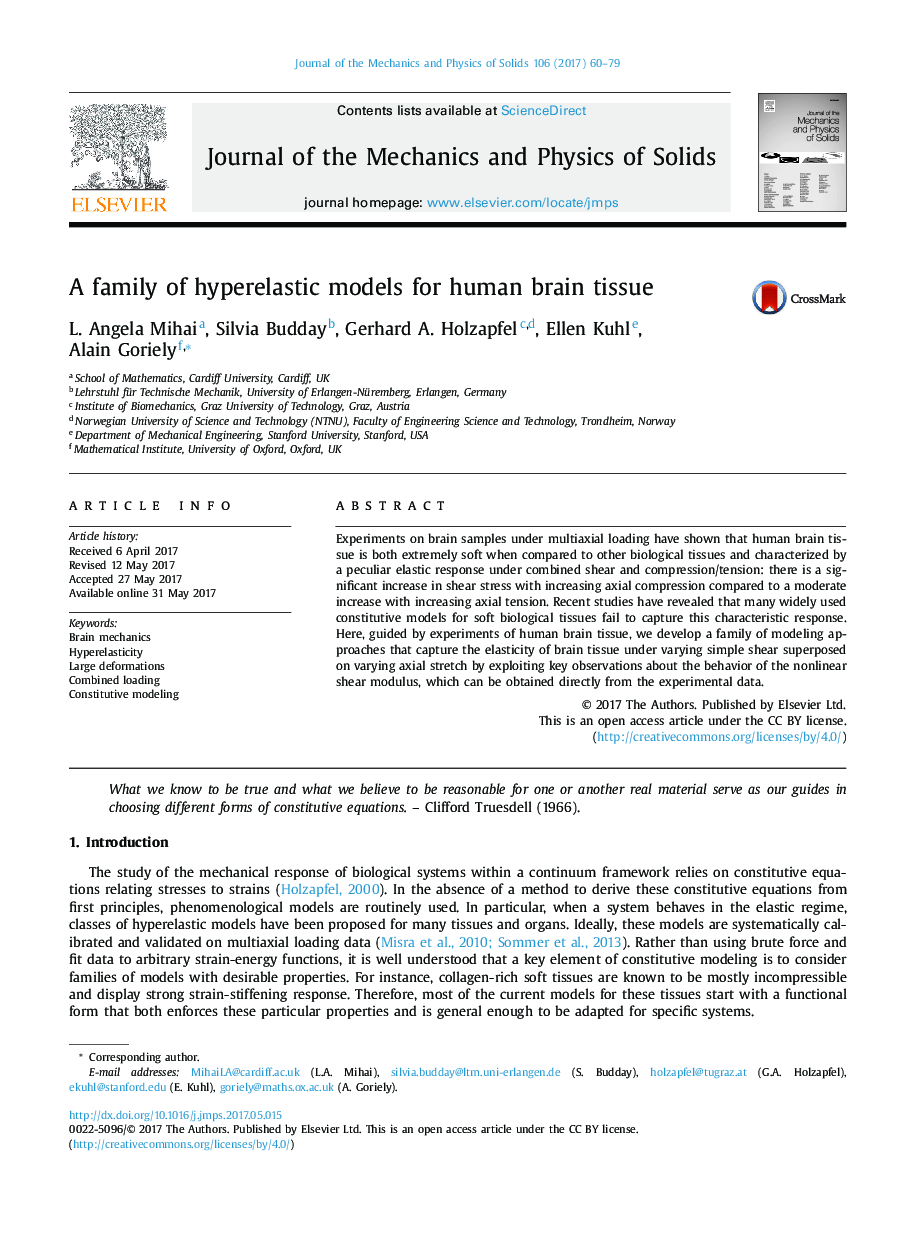| Article ID | Journal | Published Year | Pages | File Type |
|---|---|---|---|---|
| 5018090 | Journal of the Mechanics and Physics of Solids | 2017 | 20 Pages |
Experiments on brain samples under multiaxial loading have shown that human brain tissue is both extremely soft when compared to other biological tissues and characterized by a peculiar elastic response under combined shear and compression/tension: there is a significant increase in shear stress with increasing axial compression compared to a moderate increase with increasing axial tension. Recent studies have revealed that many widely used constitutive models for soft biological tissues fail to capture this characteristic response. Here, guided by experiments of human brain tissue, we develop a family of modeling approaches that capture the elasticity of brain tissue under varying simple shear superposed on varying axial stretch by exploiting key observations about the behavior of the nonlinear shear modulus, which can be obtained directly from the experimental data.
